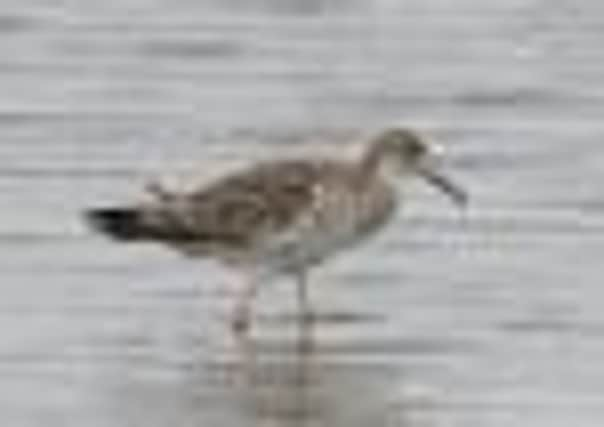Birdwatch: Ruff luck as wader numbers tumble


The majority of ruff seen in this country are juveniles with distinctive orangey brown underparts and the strongly scalloped upper parts which are this medium-sized wader’s main identification feature.
Adult females are brown, mottled and spotted with black, while the males have a bewildering variation in plumage, from black and brown through to pure white.
Advertisement
Hide AdAdvertisement
Hide AdAt this time of year, the adult males retain at least some of their breeding plumage of feather ear tufts and thick feathering around the neck and head which are puffed out during the spring competitions for females, which is known as lekking.
There are only a few places where these displays might be seen in this country, one of which is Natural England’s Lower Derwent Valley reserve where between 25 and 30 ruff were present in early spring before moving on to Scandinavia and Europe.
The future of the ruff as a regular passage wader in this country is in doubt. There has been a pronounced shift east and northwards in the ruff’s breeding range over the past decade and numbers in Europe have fallen sharply.
The ruff’s world population is estimated at about 2.5m, of which 98 per cent nest on the high Arctic tundra.
Advertisement
Hide AdAdvertisement
Hide AdThe European population breeds in more temperate latitudes on wet grasslands, but now only between 8,000 and 14,000 do so, with big losses in Finland, Poland and Latvia and, closest to us, the Netherlands, where numbers have dwindled from between 400 and 800 pairs in the early 1990s, to virtually none now.
Numbers seen here have also fallen over the past decade.
At Blacktoft Sands, where yearly records have been kept since the 1970s, there used to be peak counts in good years of between 150 and 200 ruff.
But five years ago, numbers went into a steep decline, a situation reflected on reserves across Britain.
In western Europe, the problem is the loss of the wet pasturelands where ruff used to nest as these are drained or sprayed with pig slurry to fertilise them, and the losses further east as modern farming methods reach former Eastern Bloc countries.
Advertisement
Hide AdAdvertisement
Hide AdRuff are also coming under increasing pressure on their wintering grounds in West Africa as many more are caught and eaten, while a similar fate awaits many other waders around the world, including the rare spoon-billed sandpiper, which are still being trapped in the bay of Bangladesh for food.
A marsh and a wood sandpiper, 13 spotted redshanks, three greenshanks, six green sandpipers and 47 black-tailed godwits were among the other waders seen at Blacktoft Sands.
A few fortunate birdwatchers managed to see a rare Pacific swift as it passed over the Spurn reserve on Saturday afternoon on its way to Lincolnshire where it was later seen over Gibraltar Point.
The Pacific swift is about the same size as a common swift but has a white rump.
Advertisement
Hide AdAdvertisement
Hide AdOther sightings included a great white egret and 2,000 little gulls off Barmston.
Quail continue to be heard in cereal fields across East and North Yorkshire.
A male and female redstart and two juveniles have been seen at Fairburn Ings, indicating breeding on or near the reserve, while there are also two singing turtle doves. Two siskin were seen on the feeders near the visitor centre.
Two spoonbills and four little egrets are also on the reserve, and two spoonbills and five little egrets were present at Blacktoft Sands.